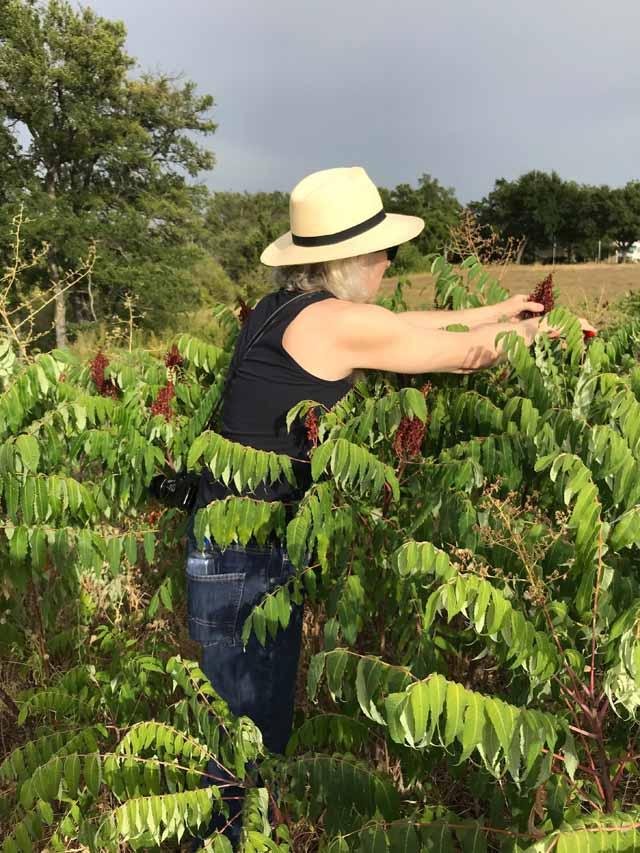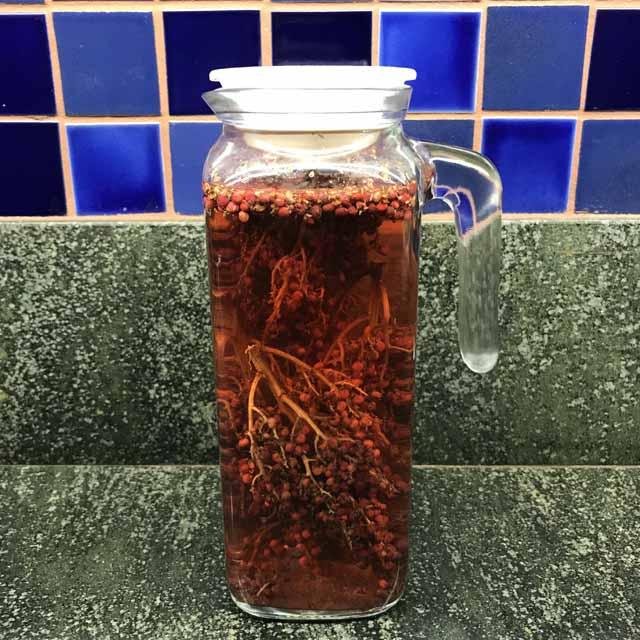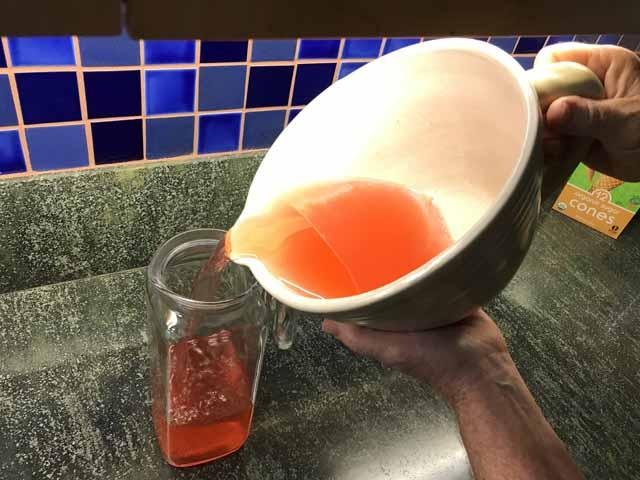Prairie Notes #140 - Feelin' the Flames
Prairie Notes are monthly photo/journal observations from Tandy Hills Natural Area by Founder/Director, Don Young. They include field reports, flora and fauna sightings, and more, mixed with a scoop of dry humor and a bit of philosophy.
They are available free to all who get on the FOTHNA email list.
Feelin' the Flames
Prairie Notes #140
AUGUST 1, 2018
01) Feelin' the Flames
02) Field Report - July
03) PrairieSky / StarParty Report
04) Summer Stun-sets
05) When Life Gives You Sumac...
06) Summer Bookshelf - Kids
07) Summer Bookshelf - Adults
08) Prairie Proverb
01) Feelin' the Flames
The sun was so hot out on the prairie last week that I could feel the flames licking my hat. Very few visitors bothered to trek the Tandy Hills. Nevertheless, despite the heat and crispy conditions, we always make time for a few jaunts. The first few days of July were not so bad. We observed a few things blooming including Smooth Sumac, Yellow Compassplant, White Prairie Clover and False Gaura. We saw mystical sunsets filled with clouds hinting that rain was on the horizon, but, alas, not a drop.
After a string of 100's, the temp on July 20 topped out at 110 degrees. A few days later it reached a sizzling 111! Summers like this one in 2018 makes me appreictae the resliience of the Tandy Hills prairie and its botanical bounty. In about eight months, like they have every year for millennia, the wildflowers will be as colorful as the July sky. Until then, I think I'll dive into some summer reading, enjoy a glass of Sumac lemonade and contemplate the sunset.
DY
Editor's note---Hours after publishing this issue, a cold front blew in delivering cooler temps and another trace amount of rain and a brief respite from the drought.
02) Field Report - July
Tandy Hills had only a trace of rain over the entire month of July causing most plants to shut down and conserve moisture. The record rainfal last March is a distant memory. The prairie is now a sea of brown and tan, not very photogenic, but the sunsets....the sunsets were awe-inspriging in July. I braved the heat a few evenings to get these pics for your viewing pleasure.
03) PrairieSky / StarParty Report
The July event was cancelled due to extreme heat. Here's hoping August won't be as bad. FW Astronomical Society representative, Pam Kloepfer, shares the following enticements about the August 18 night sky:
“This month, we will continue to have a dazzling array of planets! Venus will be the brightest in the West, and is in phase, easily visible in a telescope. Jupiter will continue to be well-positioned with its four visible moons, and Saturn will be stellar with its gorgeous rings! Mars is the closest it has been to earth since 2003, and is very red and bright. The moon will be at First Quarter, perfect for viewing craters and mountains along the terminator - the line between day and night! Come and enjoy a night “under the planets!
In other skywatching news.....As you may know, the longest, total lunar eclipse of the 21st century occurred on July 27. It was not visible in Fort Worth, however. But FLASHBACK 140 years ago to July 29, 1878, when Fort Worth was ground zero for observing a total solar eclipse.
In fact, a group of esteemed scientists from the norteast led by, Prof. Leonard Waldo of Harvard University, along with an arsenal of telescopes and scientific equipment, rode the train to Fort Worth, camped on a farm about a mile southwest of downtown and recorded their scientific observations. This was the first scientific study of the sun ever conducted in Texas and one of the first serious studies in the US.
Read much more fascinating detail about this story, HERE: https://hometownbyhandlebar.com/?p=26302
HIstory was made in Fort Worth, Texas on July 29, 1878.
04) Summer Stun-sets
Summer sunsets are often beutiful but this year they had help from so called, Saharan Desert dust, that blew in fom North Africa. On a couple of nights, the colors in the sky were stunningly rich. It's no exaggeration to write that I was transfixed by the enormity and beauty in the sky above Tandy Hills.
05) Summer Bookshelf - Kids
If you are like me, right about now, you are escaping the out-of-doors heat for the in-of-doors AC. Those of you with younger kids or a younger heart may be interested in four new, nature-related, children's picture books recently reviewed by the New York Times, to fill the hours until it's safe to outside again. (See link below.)
I asked Debora Young, something of a specialist in children's literature and illustration, to give the following, mini-reviews, for two of them. Herewith, her comments:
The Honeybee, by Kirsten Hall; illustrated by Isabelle Arsenault; (ages 4 -8)
“Without scientific dryness, the book tells the secret life of honeybees. The illustrations suit the story perfectly and are in a word, JOYFUL. You get the feeling of being a bee, even going deep inside the hive. Younger kids in particular will like the nursery rhymey rhythm, especially when read aloud by mom or dad in your best honeybee voice. Lots of fun.”
Hawk Rising, by Maria Gianferrari; illustrated by, Brian Floca; (ages 4 - 8)
"The story is about a family of urban, Red-tailed Hawks, as observed by two young sisters from their nearby home. It focuses on the hawks search for food over a 24-hour period. The story reads like a poem and doesn't pull any punches when describing the predatory nature of hawks. The illustrations soar and move like the hawk."
https://www.nytimes.com/2018/07/23/books/review/honeybee-kirsten-hall-is...
06) Summer Bookshelf - Adults
The distinguished, Chicago Review of Books, creates an annual Best of Nature Writing. They recently released their list for the first half of 2018. There's some wonderful finds here for those interested in the natural world while we wait out the drought.
Link here: https://chireviewofbooks.com/2018/07/16/best-nature-writing-of-2018-so-far/
07) When Life Gives You Sumac...
...you make Sumac Lemonade, of course. Some call it Indian Lemonade, others Rhus Juice, in refernce to the Latin name, Rhus glabra, known by the common name, Smooth Sumac. By any name, it's a delicious, easy to make, vitaimin-rich, refreshing, summertime beverage. Late summer is the best time of year to harvest the berries to make it. We did, and the results were fabulous.
When I was a teenager exploring Tandy Hills in the late 60's, I'd sometimes lie under the Sumac trees, looking up at the sky, daydreaming, on grey fall days. I called them Hobbit trees due to their mature looking but small size. They are, in fact, a common perennial shrub and grow in all of the lower 48 states, most of Canada and parts of Mexico. There is a thriving colony at Tandy Hills. The leaves, almost tropical in appearance, are bright red in the fall. They are a valuable wildlife forage and have a long history of human use. By late summer the cone-shaped fruits are bright burgundy red and ripe for making Sumac Lemonade.
There are lots of different recipes out there in Google-land. Here's how we did it:
8) Prairie Proverb
“We should care about monarchs like we care about the Mona Lisa or the beauty of Mozart’s music. To me, the monarch butterfly is a treasure like a great piece of art. We need to develop a cultural appreciation of wildlife that’s equivalent to art and music.”
Prairie Notes© is the official newsletter of Friends of Tandy Hills Natural Area, a 501 (c)(3) non-profit organization. All content by Don Young except where otherwise noted.









































